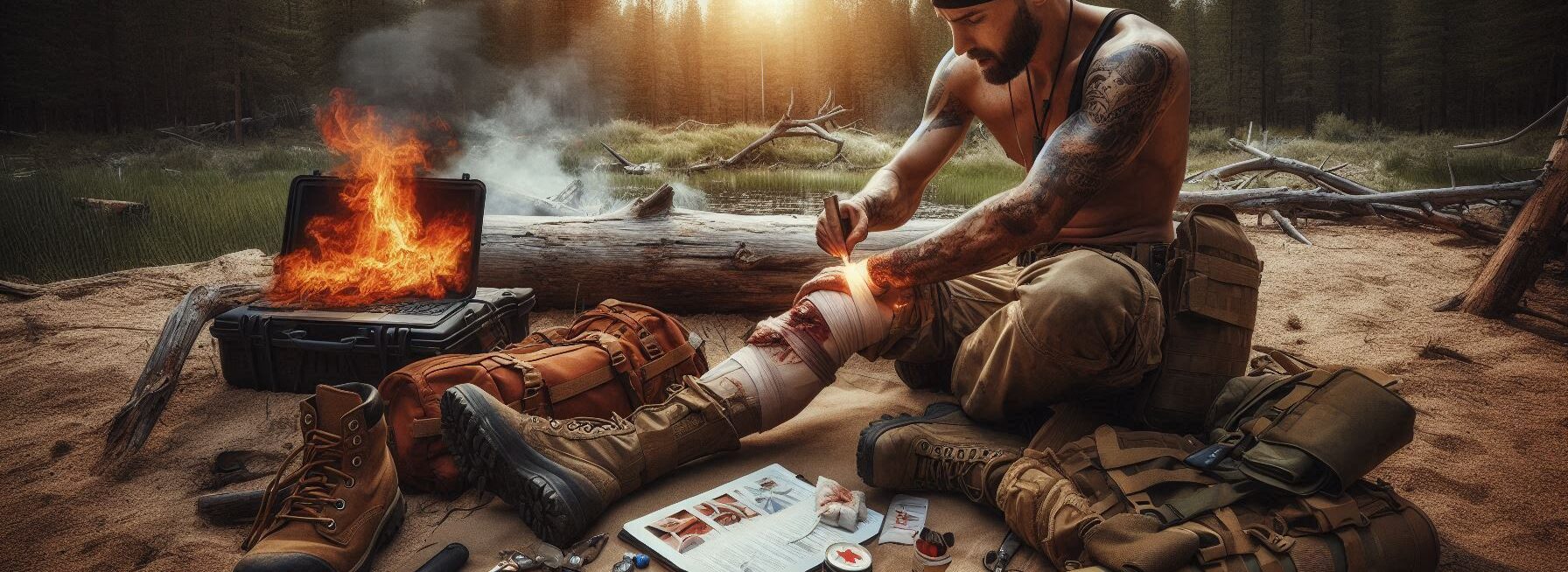Please Note: This post may contain affiliate links. If you click one of them, we may receive a commission at no extra cost to you. As an Amazon Associate, I earn from qualifying purchases.
Last Updated on October 19, 2025 by Kevin Collier

Top Takeaways and Key Concepts
Establish the field hospital site on high, stable ground with clear vehicle access.
Ensure power, clean water, sanitation, and mobile communications are fully functional onsite.
Use modular units (tents, containers) for rapid setup and flexible layout of wards.
Define zones for triage, surgery, recovery, logistics and staff areas with efficient workflow.
Pre-stock essential supplies (beds, meds, oxygen, PPE) and practice rapid deployment drills.
You made a major choice, then. You want to be the hero in a tragedy, whether it's a zombie apocalypse or just a very horrible camping trip. Setting up a field hospital sounds like a lot of fun, doesn't it?
Let's be honest: it's not an easy job. A lot to think about. But guess what? It can be just as fun as making a fort out of pillows. Really! We'll get through this together, and it'll be a lot of fun.
What do you need first? You'll need some basic things. Band-aids, antiseptic wipes, and maybe some soft blankets. Imagine yourself as a superhero with a first-aid kit, making a comfortable place for others to obtain help.
Next, decide where to put your hospital. It may be in a big tent, a garage nearby, or even just a clear spot in the yard. Choose a place that is easy to find, like a beacon of hope!
Ask a friend for aid. Working together makes things better. Also, working together is more fun. You can have fun while you get everything ready and gather materials.
Stay cool when it's time to help others who need it. A grin can do a lot. You might be terrified or anxious, and so is everyone else. Your peaceful energy will assist other people relax.
Making this an enjoyable project means you're not only helping people, but you're also acquiring useful skills. Like how to make things better and improve things. That's really cool!
Just have fun with it all. You are being a hero in your own way, and that feels wonderful. Accept the turmoil, laugh a little, and realize that every little bit helps. You can do this!
Contents of This Page
*** Shop for Survival Gear - Tools - Kits ***
Survival Gear - Bags and Backpacks - Knives - Boots/Footwear - Communication
Outdoor Cooking - Gloves - Hydration - Dry Boxes - Water Filtration Systems
Tents - Sleeping Bags - First Aid Kits - Multi-Tools - Flashlights - Fire Starters
Navigation - Survival Food - Night Vision - Headlamps - Stun Guns - Binoculars
Assessing Your Needs: Who’s Coming?
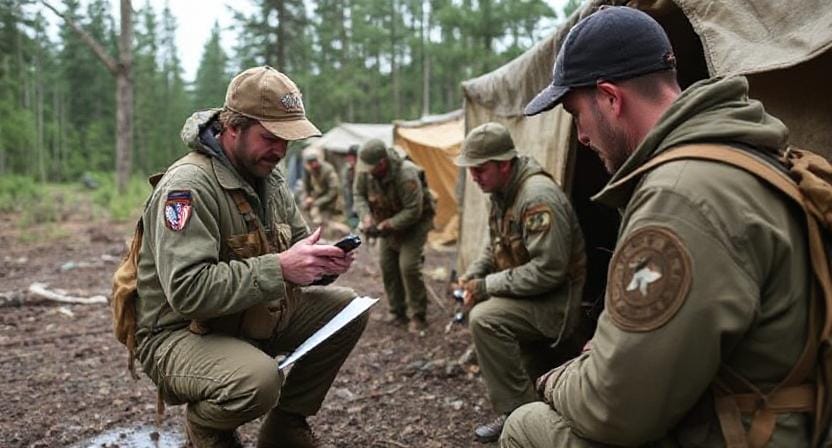
First things first: we need to look at the situation before we start putting down tarps and putting on band-aids like we're at an arts and crafts fair. How many people do you think will come? Are they hurt or simply hungry?
You would think that counting how many patients will come is easy, but it's not as easy as counting jellybeans at a fair.
Think about things like how big your town is, how many people would get hurt in the disaster (for example, if it was an unfortunate brush with an overly aggressive bear), and whether your friends will come just because they heard there would be free food.
Now, based on these estimations, get your supplies. Get ready if you think more than ten people might come in holding their arms or legs (or both). Trust me, no one wants to use toilet paper as a bandage. It's better to have too much gauze than not enough.
Picking the Right Place

Next on our list is the location, location, location! Choosing where to start your shop can make all the difference, just like real estate brokers love to tout. You want a place that is easy to get to but safe from more disasters, such away from falling trees or furious animals that may have heard about your medicine stash.
If possible, think about putting up close to buildings that are already there. A strong barn may be very helpful. It keeps everyone dry and has enough space for beds constructed of hay bales, which can also be used as seating while you wait.
But if you're feeling brave and have some old tents laying around from camping excursions (you know, the ones that seemed easier to set up than they actually were), go ahead! Just make sure they're strong enough to stand up to wind gusts that could blow over your grandma's beloved garden gnome.
Setting Up Triage Zones

After you've picked the best place for your operations, it's important to set up triage areas. These are basically places where you'll decide who gets treated first based on how bad their injuries are. It's like putting pandemonium into heaps that you can handle. It's like sorting laundry, but with more blood and fewer socks.
Use temporary signs to clearly mark each area so that even someone who is only half-awake can find their way around without getting lost, like my dog does every time I take him trekking.
Use colors or symbols: red for situations that need immediate attention, yellow for cases that can wait, green for cases with mild injuries that need little care, and black… well, let's hope nobody ends up in that group!
Putting Together Medical Supplies
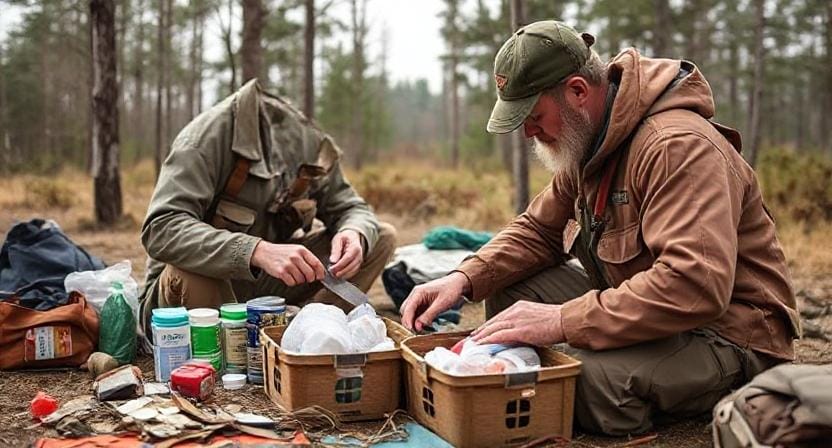
Now it's time to organize the medical supplies, which is my favorite part! This is where you put your inner Marie Kondo to work and make sure everything is in its right spot.
Get some boxes or bins—whatever keeps things neat—and name them based on what's inside. For example, bandages go in one box, antiseptics go in another, and pain relievers go in a third box because obviously no one knows how many ibuprofen tablets fit in one bottle.
Remember that having extra materials won't damage anyone unless someone decides to use them all at once during an impromptu game of “How Fast Can We Bandage Each Other?” So be smart about how you stock up!
Getting Staff for Your Field Hospital
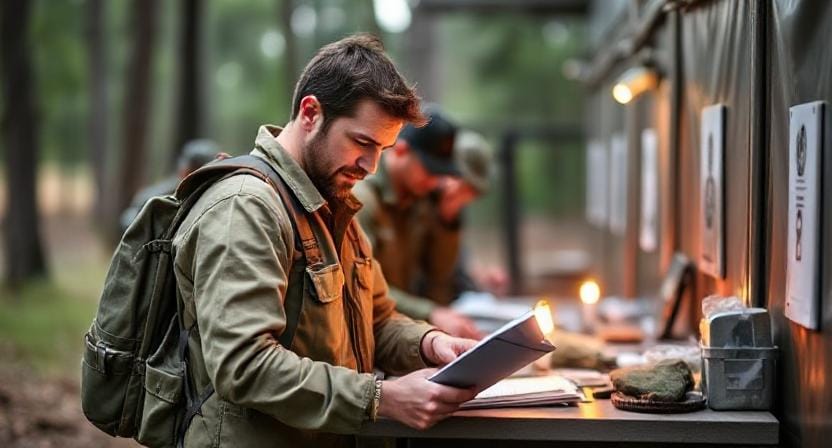
Let's see…who is going to help operate this business? You can't do everything by yourself unless you're secretly superhuman (in which case I'm really jealous). Get people to help out, even if they only do it because they heard there might be food afterward!
Be sure that everyone knows what their job is ahead of time. Who will do triage? Who is in charge of keeping morale high by telling jokes when patients have to wait too long? And yes, I really do think that comedy should be a part of any treatment strategy! After real medicine, laughter is the finest medicine.
Give them defined tasks, like checking vital signs or keeping track of inventories, so that no one unintentionally tries to heal wounds with ketchup instead of antiseptic cream (yep, I've seen stranger things happen).
Making Comfort Zones
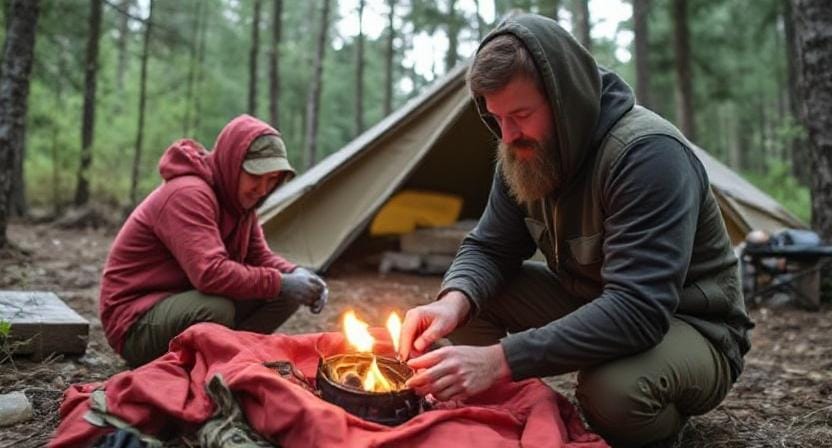
Finally, and this is perhaps the most crucial thing, don't forget to make comfort zones in your field medical setup. Everyone loves to feel comfortable, even when things are crazy! Put together a space with blankets and pillows where patients may relax as they wait for treatment or maybe just get some sleep between rounds of “What happened this time?”
Set up water stations with glasses (and maybe even hot cocoa if you're feeling kind) and nutritious foods so folks don't get hangry while trying not to bleed everywhere. This is a win-win situation if I've ever seen one!
Writing positive slogans on pieces of cardboard that are hanging around camp (“You got this!”) and having enjoyable things to do nearby, like puzzles or cards, might also help.
Wrapping It Up
It doesn't take a genius to build a field hospital. It's more like organizing a camping vacation with the family, which I still goof up every year. You know what I mean. You forget the marshmallows, and all of a sudden it seems like a disaster.
We need to be ready for natural calamities and even small incidents, like stubbing our toes when we trip over tent poles. It's not only about being ready for the major things. Every single bit matters.
Think about what you could need. Write down a list! Some bandages, some cold packs for bumps, and maybe a nice chair for people who need to rest. It's all about making people feel protected and at home.
It's really crucial to make comfort zones. A vibrant blanket, some food, and a pleasant smile may make a big difference. It makes a scary situation a little less scary. You can be the one who makes them feel better.
When things get chaotic, stay cool. It's like the first night of camping when everything seems new and a little weird. Others will feel calmer when you are. You will be ready to get started.
You will be the hero when calamity comes if you follow the stages, such as figuring out what you need and making pleasant places. You could become known as “The Camp Hero” among your buddies! That would be really great!
So, get ready and get your kit ready. You could have a lot of fun on this expedition, and it could lead to something fantastic.
Suggested External Resources
Field Hospital Setup Guidelines
https://www.cdc.gov/disasters/hospital.html
Emergency Preparedness Tips
https://www.redcross.org/get-help/how-to-prepare-for-emergencies.html
Triage Basics in Disaster Situations
https://www.ems1.com/ems-products/articles/triage-in-disaster-situations-nF3V2bH4kY7D5qQe/

Kevin Collier is a seasoned survivalist and expert in prepping and homesteading, contributing to WiseSurvive.com. With a deep-rooted passion for self-sufficiency and outdoor survival skills, Kevin shares practical advice, strategies, and resources to help individuals prepare for any challenge. His informative articles cover a range of topics, from essential survival techniques to sustainable living practices, empowering readers to thrive in any situation. Whether you're a novice or a seasoned prepper, Kevin's insights will inspire you to take charge of your readiness and build resilience for the future.


